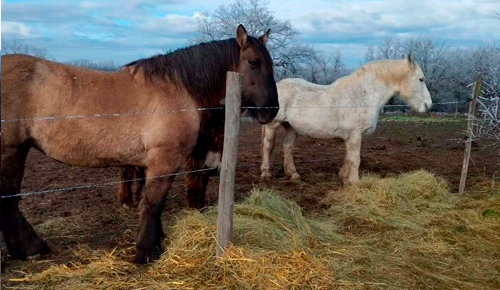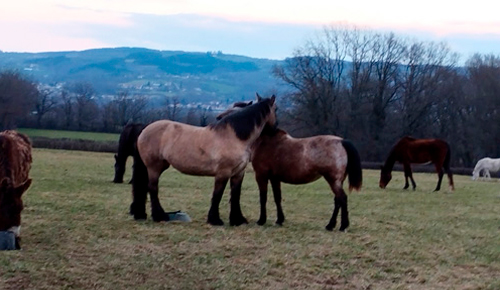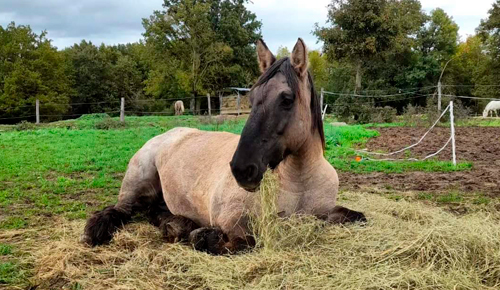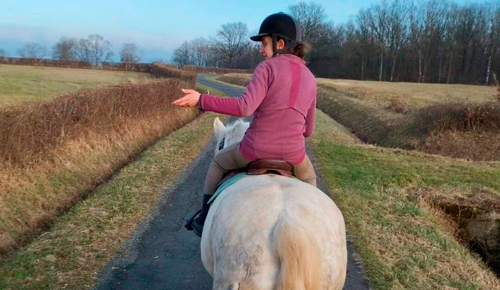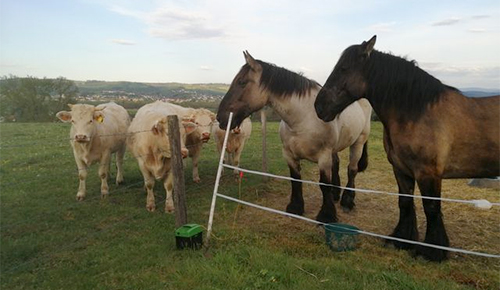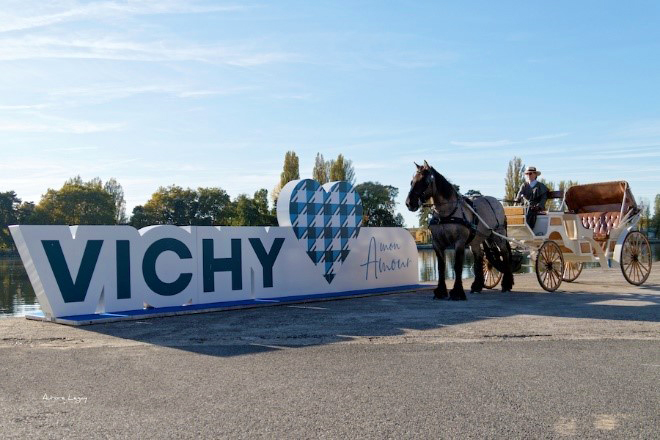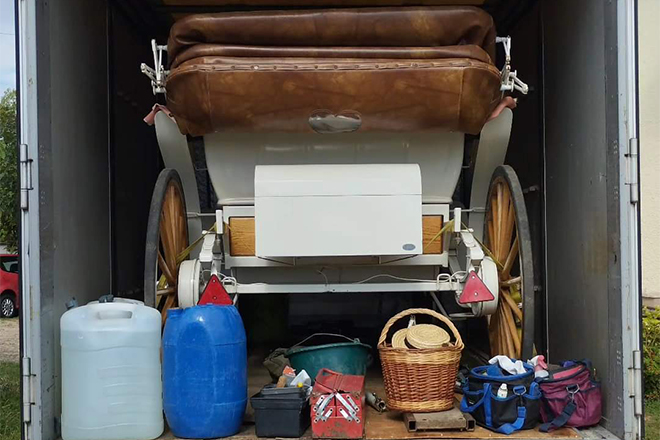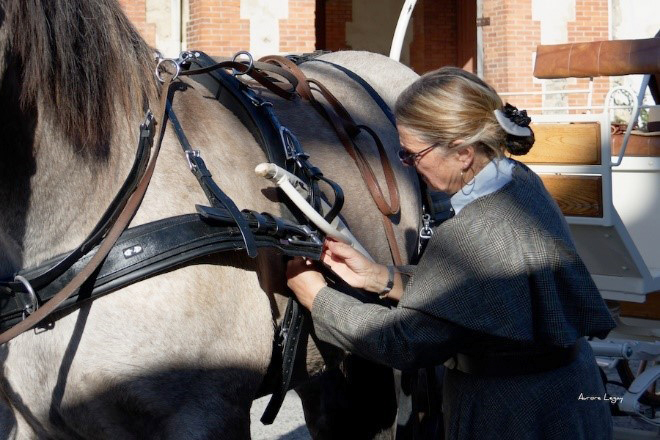Go behind the scenes at Calèches de la Rive
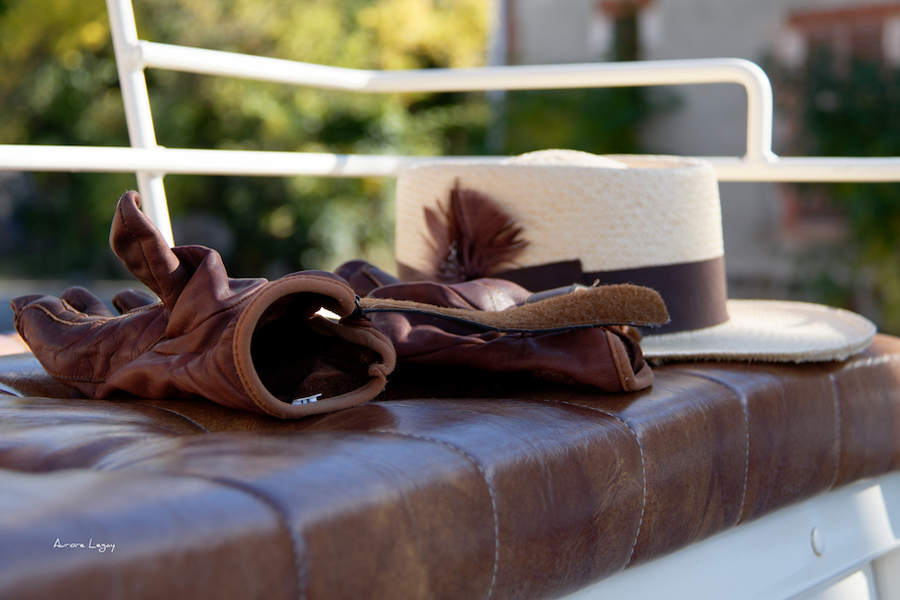
The essentials for coachmen: hats and gloves
n seeing Françoise and her horse-drawn carriage in the streets of Vichy, you might have wondered where the horses went in the evening, what their names were or what they did outside the summer season...

Françoise: from family heirlooms to horse-drawn carriage rides around Vichy
rançoise's life choices were guided by family personalities. Her grandfather, a country doctor at the eve of the twentieth century, began his career in a horse-drawn carriage for home consultations.
Her father would use a horse-drawn sleigh in winter, and introduced her to horses when she was around ten years old.
Following in the footsteps of these two men, who were focused on caring for people, she became in turn a qualified nurse and a health executive trainer, before returning to horses at a later stage.
It was a change of direction for a new life, during which she obtained the Brevet Professionnel Responsable d'Exploitation Agricole (livestock option), followed by the Certificat de Spécialisation Utilisateurs de Chevaux Attelés.
Françoise is also an art historian.
The Ecole du Louvre was a discovery that turned into a passion during one of her nursing jobs in oncology in Paris; her staggered working hours enabled her to attend classes. It was a welcome break from a sometimes difficult day-to-day life, and a window onto the world.
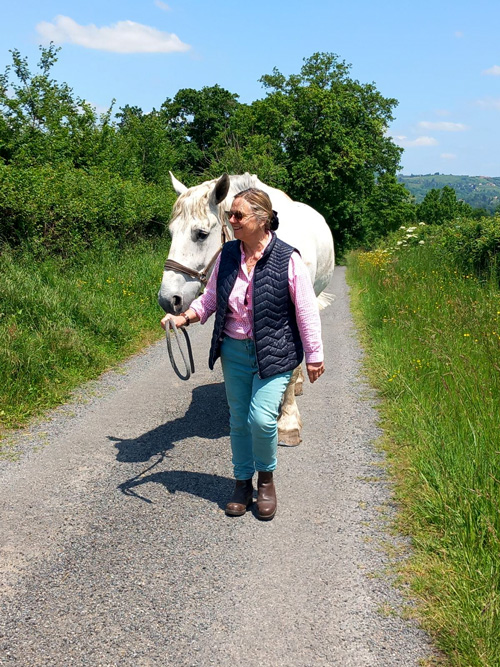
Françoise, the horse lover
The life of our horses Ursula, Galopin and Isidor
Ursula
rsula, Françoise's ‘mare of love’ is a Poitevin mare, born in 2008 and brought back from Poitou Charentes with the stallion Kado.
Françoise has known Ursula since she was a month old. She's a very affectionate mare, close to people, gentle and capable of spontaneously putting her head on her shoulder in the meadow.
She's willing and quite versatile, even skidding as far as she's physically able.
Françoise fell in love with this elegant breed at first sight, but the low number of births makes it an endangered breed.
So she's helping to promote it through her work, and now also through breeding, as Ursula has recently become a broodmare.
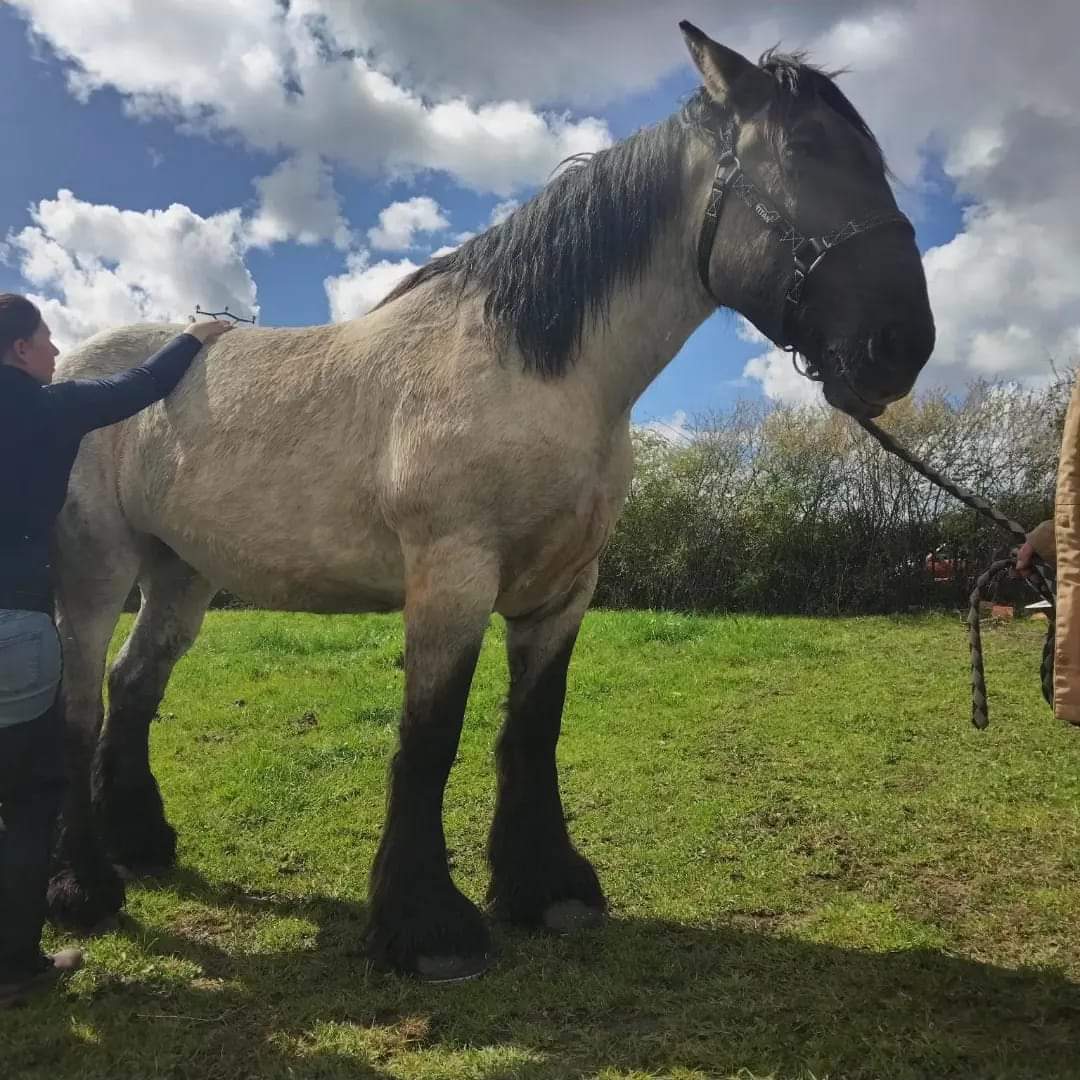
The beautiful Ursula in an osteopathic session
Galopin
alopin was born in Poitevin in 2016 and stands 1m80 at the withers.
He is a large, well-built model with strong gaits. When he was bought for the purpose of covering mares, he didn't know how to do anything and spent his days in the pastures.
Before arriving in town, it took almost 2 years for him to show his feet, be neutered and agree to work without looking for other horses ‘with their heads in the air’. He has replaced Ursula and you will meet him on your carriage ride.
He has a very good heart, is very kind and close to people, but has a strong character. He's the boss in the meadow and stamps his foot when he's not happy. We had to ‘negotiate’ with him!
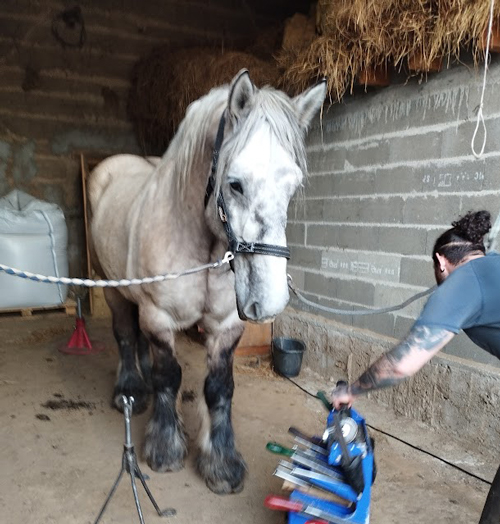
Horseshoeing
Isidor
sidor is a Percheron draught horse born in 2018 who replaced a mare who was too nervous in town.
He was bred by the Le Pin National Stud in Normandy.
He is a very gentle, versatile horse, close to people and always willing to do what is asked of him with docility. He has a ‘tractor’ function at home, as he is regularly hitched to a trailer to pick up cut branches or transport manure.
Galopin will soon be doing the same!
When he's saddled up for a walk in the countryside, he stamps his feet with excitement. He's happy and playful.
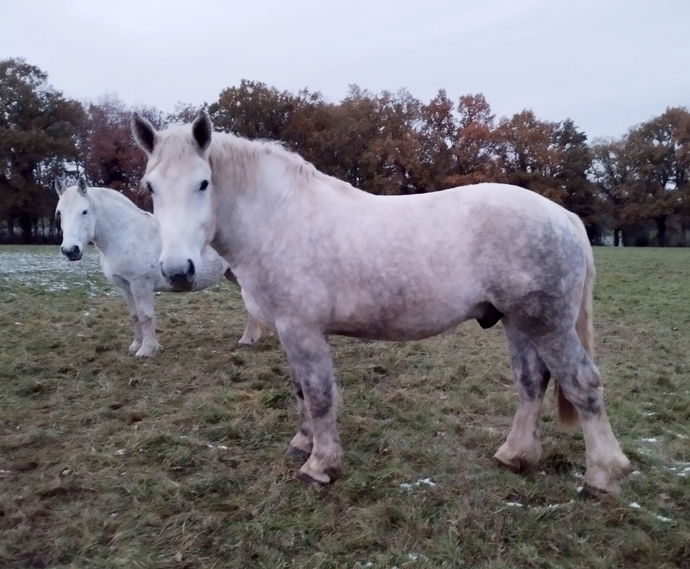
Isidor, the percheron in the meadow
Life on the farm
The horses' feed is “traditional”, i.e. based on basic products (barley, soya meal, dehydrated alfalfa, rapeseed oil, salt of the Guérande or Ile de Ré type, and mineral and vitamin supplements). The rations are calculated according to their age, morphology and work intensity. They are fed a morning and evening ration. Hay, mains water and a salt stone are available on request.
The horses live all year round in meadows, sheltered by trees or woodland. This contributes to their good physical and moral health. This has always been Françoise's approach: to think about the basic behaviour of the animals in relation to nature, and to check that everything is going well, in order to put things right when necessary.
The farm has a stable with two stalls, which are used to isolate a horse if it needs to be cared for or when it returns from a service in the evening in winter, so that it doesn't have to be put out to pasture straight away. So it's very occasional.
A day in season
fter feeding and checking all the livestock, it's time to prepare and clean the equipment, so that everything is ready and in place for the services: harness, bridle, guides, dung bag, water bottles, clothes, charged telephone, etc.
This may be interspersed with the management of bookings, requests for quotes, etc.
Then comes the time for preparing the horse (hoof-cleaning, curry-combing, brushing, checking that all is well at this moment of contact), transporting everything to the carriage parking area in Vichy. There, the grooming is refined, the horse is harnessed and the carriage is ‘armed’. Then it’s time to clean it and install all the necessary equipment.
The coachwoman is dressed and the horse is harnessed.
In the meantime, you must have had time to have lunch, which takes place two and a half hours before the departure of the carriage, i.e. just before the horse is groomed.
At the end of the service, it's time to return to the carriage parking area, which means repeating the morning's process in the reverse, which lasts a good two-and-a-half-hour of work before getting home.
Horses have a work schedule: same number of days worked and rested, no more than 6 hours of work per day, rotation according to their behaviour (tiredness for example).
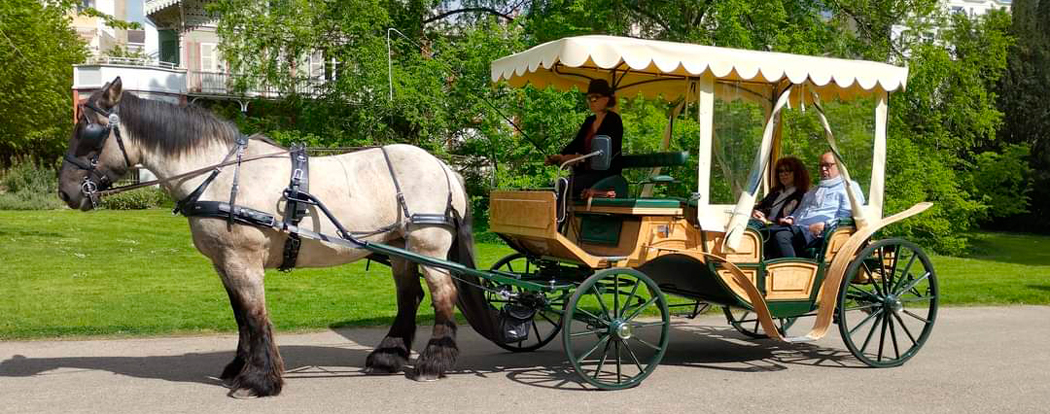
In the case of the Parks
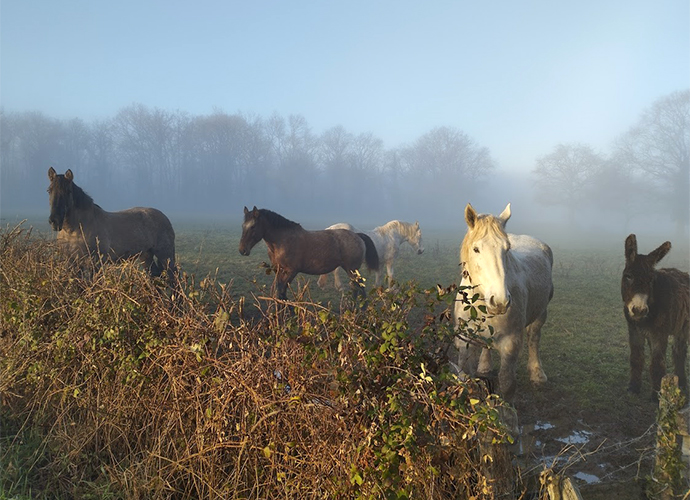
Horses for work and boarding together in the meadow
A day of rest
he horses stay quiet in the meadow.
For Françoise, it's time to make sure the horses have plenty of water, hay and feed, to carry out repairs if necessary. It is also time to take care of administrative matters (management, communication, estimates, etc.) and to relax for a while! !
One day out of season
he ‘feeding’ side and checking the livestock is always the same, to which must be added the winter work: checking the fences, even changing the electric wires, trimming the hedges, cutting the brambles that have grown on the wires, various and sundry repairs.
It's also a time for reflection, for improving and developing the work of the following season, and for communication.
